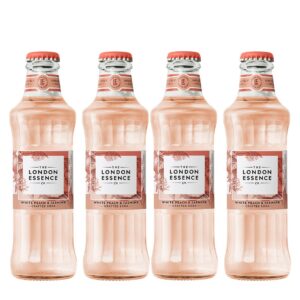How about serving gin at the table? Traditionally associated with cocktails, this spirit is much more versatile than you might think. Its aromatic diversity makes it the ideal companion for a wide range of dishes. Find out which ones.
Gin is a multitude of herbs, spices and fruits that make up a complex recipe. Juniper, coriander, angelica, cinnamon, ginger, citrus…the variety of aromatic profiles opens up a very broad spectrum. Add carefully selected gourmet dishes, and you’ve got a wonderful exploration of flavors.
Fundamental principles
Unlike more common food and wine pairings, which are often guided by tannin structure and acidity, here the focus is more on a subtle alchemy of fragrance and texture. Here are a few key points to make sure you don’t go wrong:
- Harmonizing flavors. As with wine, the idea is to create a link between the glass and the plate. A light, floral gin, for example, will enjoy the company of delicate scallops. Or, on the contrary, a spicier gin will stand out with grilled meats or spicy dishes.
- Citrus. Many gins, especially London Dry, are dominated by citrus fruit. Whether lemon, orange or grapefruit, they go wonderfully well with fish, seafood and salads. A tasting experience full of freshness.
- Floral and herbaceous notes. These can, of course, go well with dishes with similar aromas, but can also contrast with rich, creamy dishes, counterbalancing their heaviness.
- Spice and spiciness. Gins containing spices such as cinnamon, ginger or cardamom like spicy or sweet-savory delights. Try them with pad thai, for example.

Unusual pairings
Go even further off the beaten track with pairings that can surprise and delight the taste buds. If gin is known for enhancing seafood, you can be bold by serving it with intense dark chocolate. A bottle rich in spices is preferable, its warmth and the bitterness of cocoa creating an incredible taste experience. Sweet tooths can dare exotic fruits without hesitation. Floral and citrus gins are magnificent with mango, passion fruit, papaya or pineapple. They balance the sweetness and acidity of these fruits.
In the mood for Asian cuisine? Ramen, dim sum and pho soups, with their emphasis on umami, call for gins with notes of coriander and ginger. This fresh, herbaceous bouquet adds a new dimension to soy sauce and broth. They are also a great alternative to sake with sushi. They easily find their place between the iodine of raw fish and the power of wasabi. And Indian curries and tikka masala, generous and spicy, benefit from their natural freshness.
Finally, punctuate a convivial meal with the right gin. Barbecuing? Those with resin, pine or rosemary aromas underline the smoky, spicy flavors of the meat. A cheese platter? Put on a blue cheese like Roquefort or Gorgonzola and take out a gin with citrus or fresh herbs. It softens the intensity of the cheese while moderating its salty side. Ready to sit down to dinner?









